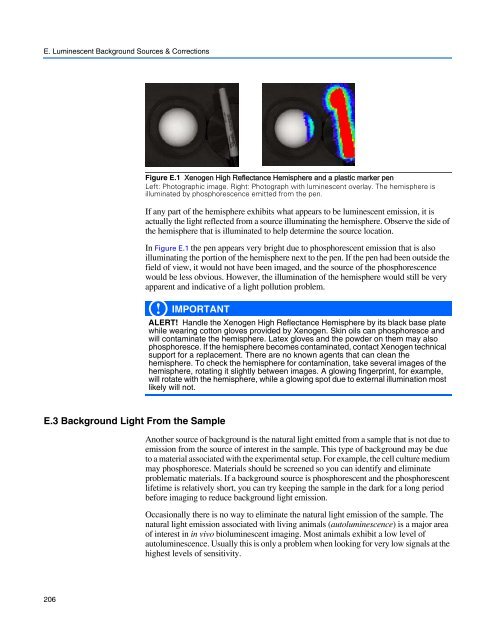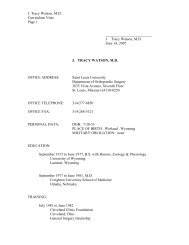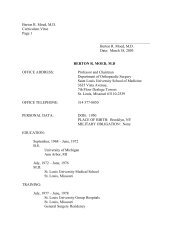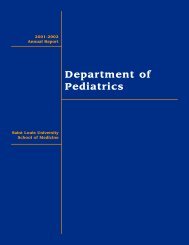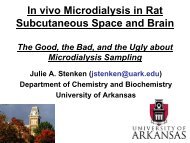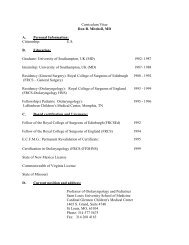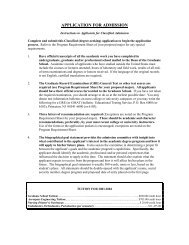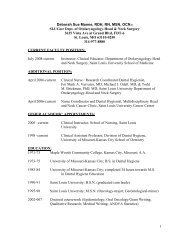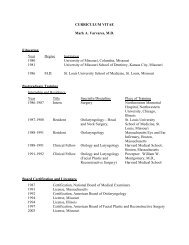Living Image 3.1
Living Image 3.1
Living Image 3.1
You also want an ePaper? Increase the reach of your titles
YUMPU automatically turns print PDFs into web optimized ePapers that Google loves.
E. Luminescent Background Sources & Corrections<br />
206<br />
If any part of the hemisphere exhibits what appears to be luminescent emission, it is<br />
actually the light reflected from a source illuminating the hemisphere. Observe the side of<br />
the hemisphere that is illuminated to help determine the source location.<br />
In Figure E.1 the pen appears very bright due to phosphorescent emission that is also<br />
illuminating the portion of the hemisphere next to the pen. If the pen had been outside the<br />
field of view, it would not have been imaged, and the source of the phosphorescence<br />
would be less obvious. However, the illumination of the hemisphere would still be very<br />
apparent and indicative of a light pollution problem.<br />
!<br />
IMPORTANT<br />
E.3 Background Light From the Sample<br />
Figure E.1 Xenogen High Reflectance Hemisphere and a plastic marker pen<br />
Left: Photographic image. Right: Photograph with luminescent overlay. The hemisphere is<br />
illuminated by phosphorescence emitted from the pen.<br />
ALERT! Handle the Xenogen High Reflectance Hemisphere by its black base plate<br />
while wearing cotton gloves provided by Xenogen. Skin oils can phosphoresce and<br />
will contaminate the hemisphere. Latex gloves and the powder on them may also<br />
phosphoresce. If the hemisphere becomes contaminated, contact Xenogen technical<br />
support for a replacement. There are no known agents that can clean the<br />
hemisphere. To check the hemisphere for contamination, take several images of the<br />
hemisphere, rotating it slightly between images. A glowing fingerprint, for example,<br />
will rotate with the hemisphere, while a glowing spot due to external illumination most<br />
likely will not.<br />
Another source of background is the natural light emitted from a sample that is not due to<br />
emission from the source of interest in the sample. This type of background may be due<br />
to a material associated with the experimental setup. For example, the cell culture medium<br />
may phosphoresce. Materials should be screened so you can identify and eliminate<br />
problematic materials. If a background source is phosphorescent and the phosphorescent<br />
lifetime is relatively short, you can try keeping the sample in the dark for a long period<br />
before imaging to reduce background light emission.<br />
Occasionally there is no way to eliminate the natural light emission of the sample. The<br />
natural light emission associated with living animals (autoluminescence) is a major area<br />
of interest in in vivo bioluminescent imaging. Most animals exhibit a low level of<br />
autoluminescence. Usually this is only a problem when looking for very low signals at the<br />
highest levels of sensitivity.


